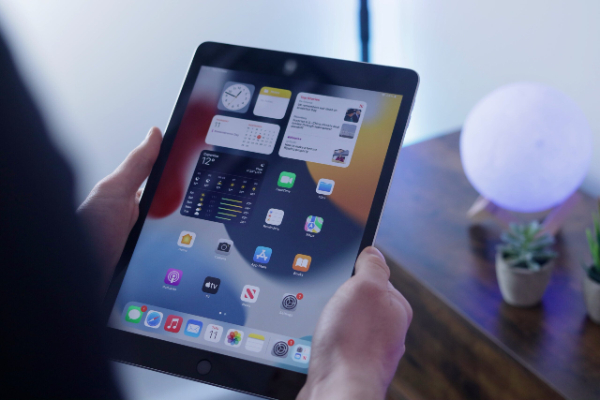Tablets have come a long way since their inception, serving as versatile devices that bridge the gap between smartphones and laptops. Let’s embark on a journey to explore their evolution and relevance in today’s tech-savvy world.
The First Tablets
Unveiling the Origins of Tablets
Tablets, contrary to popular belief, have a history dating back to the late 1980s and early 1990s when they were introduced as handheld organizers and digital diaries. However, it wasn’t until 1996, with the release of the PalmPilot, that tablets began to gain traction. The PalmPilot’s success, boasting over 30 million units sold, signaled a growing demand for tablet devices.
In the nascent stages of tablet development, these devices were relatively basic. They served as electronic notepads, allowing users to jot down notes, appointments, and contact information. These early tablets typically featured monochrome screens and relied on styluses for input. While their capabilities were limited compared to modern tablets, they represented a significant leap in portable productivity.
Tablets Today
Tablets in the Modern Era
As mobile computing technology advanced, several tablet iterations emerged over the decades. During the 2000s, Verizon and Archos released various tablet devices, but it was Apple’s groundbreaking announcement in 2010 that revolutionized the tablet industry. Steve Jobs unveiled the first Apple iPad in January 2010, setting new standards for sleek design and enhanced functionality that subsequent tablets, both from Apple and other manufacturers, aspired to achieve.
The original iPad featured a 9.7-inch multitouch display, a custom-designed A4 processor, and access to Apple’s App Store. Its user-friendly interface, coupled with a vast library of apps, made it an instant hit. Consumers and professionals alike embraced the iPad for a wide range of tasks, from web browsing and email to media consumption and gaming.
The success of the iPad prompted other tech giants, including Samsung, Google, and Microsoft, to enter the tablet market. These companies introduced their own tablet offerings, each with its unique features and operating systems. Android tablets, in particular, gained popularity for their affordability and customization options.
Versatile Applications of Tablets
Exploring the Functionalities of Tablets
Tablets serve a diverse range of purposes, making them valuable tools for various tasks. Their larger screen size offers enhanced accessibility and comfort compared to smartphones. Whether it’s browsing an NZ online casino, conducting business Zoom calls, or indulging in entertaining YouTube content, tablets provide a more enjoyable and convenient experience.
- Entertainment Hub: Tablets are ideal for multimedia consumption. Their generous screen size and high-resolution displays offer an immersive viewing experience. Users can enjoy streaming movies, TV shows, and YouTube videos with greater clarity and detail. Additionally, the rich audio quality of tablets enhances the overall entertainment experience.
- Productivity Powerhouse: Tablets have evolved into powerful productivity tools. They are equipped with robust software suites, making them suitable for tasks such as word processing, spreadsheet management, and presentations. For professionals on the go, tablets offer the convenience of creating, editing, and sharing documents with ease.
- E-Reading: Tablets excel as e-readers. Their size and display quality make them perfect for digital books, magazines, and newspapers. E-readers benefit from features like adjustable text size, backlighting, and the ability to carry an entire library in a single device. This makes tablets a preferred choice for bookworms and students.
- Gaming Paradise: Gaming enthusiasts appreciate tablets for their gaming capabilities. The combination of responsive touchscreens and powerful processors allows for a wide range of gaming experiences. Whether you prefer casual games, action-packed adventures, or strategy simulations, tablets offer a gaming paradise in your hands.
- Communication Hub: Tablets serve as communication hubs, enabling users to stay connected with family, friends, and colleagues. Video conferencing apps like Zoom, Skype, and Microsoft Teams are optimized for tablets, providing seamless virtual meetings and collaboration.
- Creative Canvas: Tablets are widely used in certain creative industries. Digital artists and graphic designers have the opportunity to employ a tablet as a virtual canvas, enabling them to craft illustrations and graphics with precision and creativity. These devices offer precise stylus input, pressure sensitivity, and a range of creative apps, making them indispensable for artistic endeavors.
The Changing Landscape of Smartphones
The Evolution of Smartphones
While tablets once held a unique position due to their advantages, the smartphone landscape has evolved significantly. Today’s smartphones boast unprecedented power and capabilities, rendering tasks previously considered challenging now achievable. Moreover, smartphones have grown in size, providing a more immersive user experience.
- Powerful Processing: Modern smartphones are equipped with advanced processors that rival the computing power of laptops. This enables them to handle resource-intensive tasks such as video editing, 3D rendering, and augmented reality applications. Smartphones are no longer just communication devices; they are portable workstations

